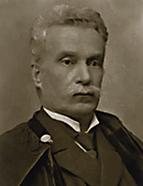

The desire to keep the central issue of art education at the forefront led to the writing of the third volume (A Reforma do Ensino de Belas-Artes III [The Reform of Fine Arts Teaching III], 1879), which offers a systematic approach to a comprehensive reform of drawing education in Portugal, and presents a curriculum that spans from elementary to higher education, exploring the advantages and disadvantages of comparing the English, Austrian, and German models with the local context, while carefully considering Portugal's own indigenous conditions. He devotes a chapter to the collections of art education in Portugal (the existing ones seem to him to be random clusters), in other words, the methods of reproduction for educational purposes and to reinforce the concept of cultural heritage. A fourth essay is promised, dedicated to the history of the academies of fine arts, which will be published in the Porto newspaper A Atualidade, however, it will focus solely on the Academia de Lisboa [Lisbon Academy] (1880).
Linking the reproducibility of heritage to the wonders of the mechanised world, he consistently emphasises the role of museums as a pedagogical tool, capable of mass-producing artistic works for educational purposes. A strong advocate for educational industrial museums, with the goal of refining the "natural" and "indisputable" ingenuity of the general population, he sought to cultivate the education of the senses and the ennobling of feelings. He was delighted to be provisionally appointed curator of the Museu Industrial e Comercial do Porto [Industrial and Commercial Museum of Porto] (1884), a position that would become permanent in 1888. Later, he was appointed as its director (1889). What promised to be a challenge soon turned into a nightmare, as he took up the position at the peak of the museum movement, only for the government to determine its closure in 1899. The historian remained a loyal custodian of the museum, which lingered in a state of twilight existence until around 1927-28. The same can be said of the Museu Municipal do Porto [Porto Municipal Museum], for which Vasconcelos was a member of the commission tasked with its reorganisation (established in 1888). He had been working towards this goal since 1889, when he authored a report outlining the proposed reforms for the museum. As the years passed, he saw the museum remain without an endowment, a proper manager, a catalogue, or a library. Despite this, he continued with the ambition of becoming its curator, taking on the arduous task of inventorying and evaluating pieces for acquisition — though this would never come to be.
This work is financed by national funds through FCT - Foundation for Science and Technology, I.P, in the scope of the projects UIDB/04311/2020 and UIDP/04311/2020.
